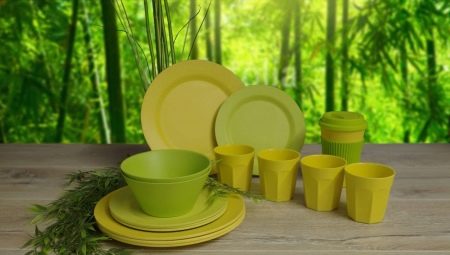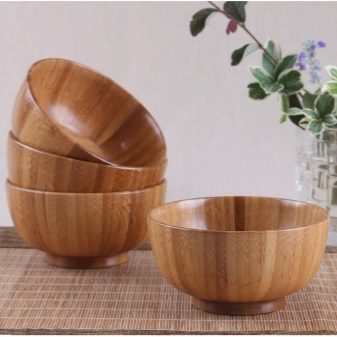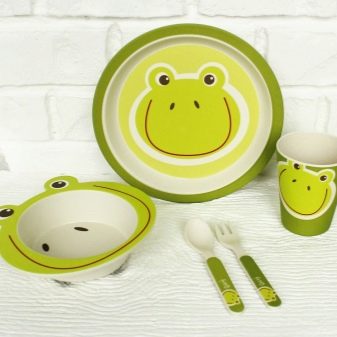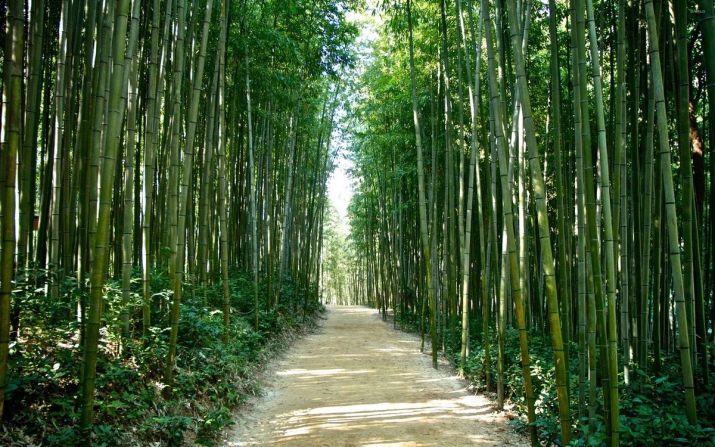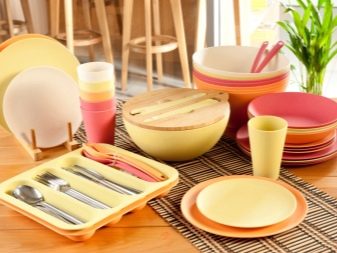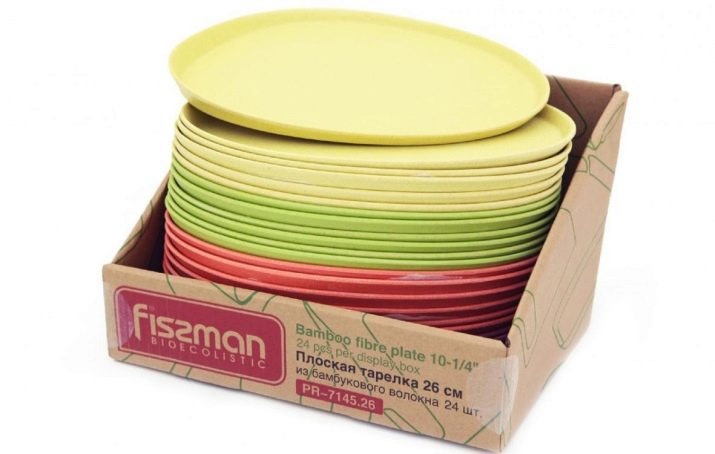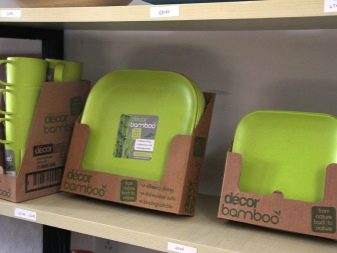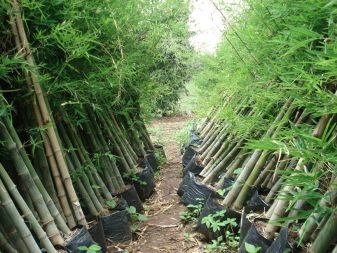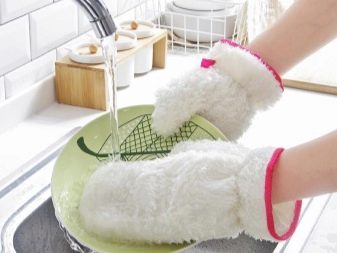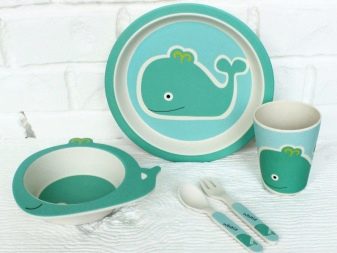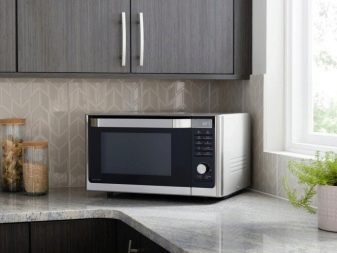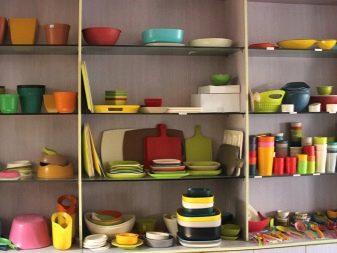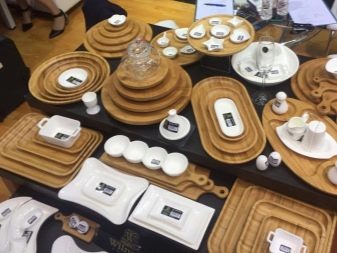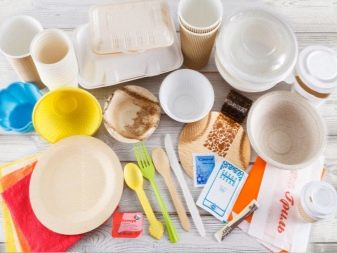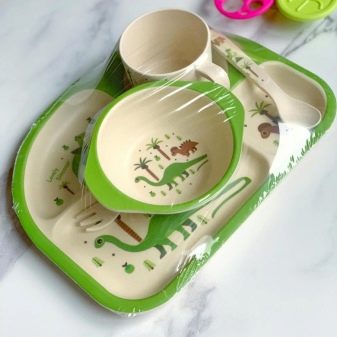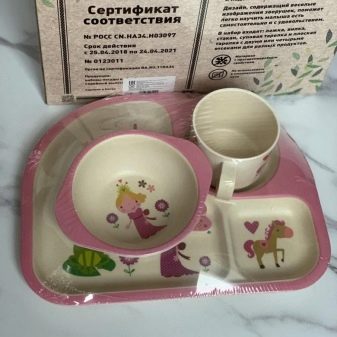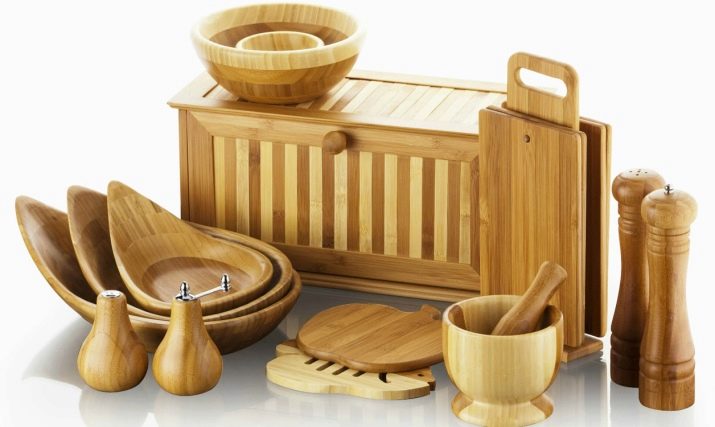In the modern world, the issue of ecology is very acute. Environmentalists and supporters of a healthy lifestyle choose for themselves environmentally friendly products and interior items. An example of respect for nature and human health was bamboo dishes, which gradually began to displace plastic products, metal and cardboard.
Properties and features
Bamboo is an evergreen plant of the cereal family, growing in the tropical and subtropical forests of Asia. The peculiarity of the plant is its growth rate: within an hour its length increases by at least 2 cm. And its simplicity makes it possible to obtain cheap raw materials for the production of eco-products without much effort.
Many centuries ago in the East, they learned about the properties of bamboo and began to use it in building houses and boats, making furniture and musical instruments, medicine and cosmetology.
In the XX century with the development of technology began to produce bamboo fiber for the production of textiles and tableware.
Manufacturing process
Bamboo fiber is obtained using shoots and leaves of plants, grinding and grinding them well. Now suppliers from Taiwan and China are offering ready-made fibers in the form of powder or granules of natural golden yellow or black colors.
This is followed by the process of manufacturing the dishes. Each manufacturer has different ingredients. Only bamboo fiber can be present here or it can be mixed with wood, palm leaves, sugarcane and food components.
Products made of fibers (fibers) can be obtained in two ways.
- Pasting blanks into a solid product and subsequent processing with wax or food varnish. Such specimens look very similar to products made of natural wood, but are not suitable for washing in the dishwasher, have a thicker surface and are not strong enough.
- Pre-prepared mixture of fiber and other components, adding a food dye of the desired shade, is placed in a press for sintering. Further, the inner surfaces are coated in one or two layers with varnish to impart moisture resistance and enhance antibacterial properties. The outer surface is painted with safe plant dyes. Products made in this way are more subtle and elegant (their thickness is about 3-5 mm), but at the same time quite durable and long-lasting.
Every year in the ranks of fans of dishes made of bamboo fiber is observed replenishment. Many housewives and even the owners of the restaurant business are switching to the use of eco-fiber tableware and cutlery, having learned about its exceptional properties.
Properties of bamboo tableware.
- Bamboo is considered an environmentally friendly raw material, which decomposes in its natural environment within 180 days, and in water in 2 days.
- Fast recovery after cutting without additional use of fertilizers.
- No risk of vegetation extermination. In recent years, other countries (for example, Ukraine) have also begun to cultivate bamboo plantations.
- When bamboo is grown, chemicals are not used, which affects the purity and environmental friendliness of raw materials.
- Bamboo fibers have antibacterial properties that prevent infection by microorganisms and fungi. This also applies to finished products. When contacting food, bamboo helps to disinfect it.
- Washing in hot water and a dishwasher does not reduce the beneficial properties of dishes for a long time.
- Durability of products with proper care and use. Even with constant and intensive use, the color and smoothness of the surface does not change.
- Despite its lightness and elegance of forms, bamboo products are durable and resistant to chipping and scratching. Preferred on trips, on picnics, for feeding children.
- The absence of foreign odors and protection against the absorption of food or paint flavors.
- After a slight wetting, it tends to dry quickly.
- It is a budget option for healthy diet lovers and environmentalists.
- A variety of shapes and colors will help you choose a set of plates or kitchen utensils for any interior.
In addition to all the above advantages, there are some limitations in the use of such dishes.
- Its washing is possible with gel-like detergents or with soapy water with a soft sponge without abrasive particles. The use of dishwashers is possible at the indication of the manufacturer.
- Possible temperature loads should not exceed 75 degrees. In bamboo dishes you cannot heat food, boil water and set it on open fire.
- Storing liquids in such dishes can lead to its biodegradation.
- Unless otherwise specified by the manufacturer, the use of bamboo utensils in microwave ovens is prohibited.
At the moment, the range of products from bamboo fiber is quite extensive.
Here you can find plates of various shapes and sizes, coasters, bowls and bowls, fruit vases, wicker baskets for bread and sweets, glasses, containers for storing food, and more. There are also cutlery: knives, forks, spoons and cooking tools.
In specialized stores, there are dryers for dishes, cans for the storage of bulk products, thermoses and even steamers. You can choose a few items from bamboo in the set as a gift for your loved ones.
In connection with the extensive struggle of the whole world against environmental pollution, eco-tableware manufacturers began to produce disposable products for picnics, fast food restaurants, and holidays from bamboo. In the model range of such products there are plates, glasses, spoons, forks, knives, containers, sushi sticks, tubes for drinks and much more.
Unlike similar products made of plastic, which has become a leader in environmental pollution, products from eco fiber very quickly decompose naturally, without releasing carcinogens and harmful substances.
How to choose?
Choosing safe and environmentally friendly dishes and kitchenware made from bamboo fiber, in addition to the price of products, It is necessary to pay attention to the following factors.
- Temperature use. A safe temperature is considered to be from -20 degrees to +70 degrees. The manufacturer’s indication of an upper limit of 120 degrees indicates a high content of melamine resins in such products. From the acquisition of such dishes is better to refuse.
- Colour. For coloring products are considered safe dyes derived from fruits and vegetables, as well as soy-based. Rich and bright shades of red and blue indicate the use of artificial colors that can cause allergies.
- Price. Very low price of the goods should be alerted. The cost of natural fiber tableware is quite high due to the laboriousness of the production process.
- Certificates and licenses. All environmentally friendly and safe dishes must be approved and have quality certificates, and the activities of the manufacturer are carried out exclusively under license.
Over the past few years, store shelves have filled with a variety of eco-dishes.
Manufacturers in pursuit of the number of sales began to increasingly use synthetic fibers and various chemicals to increase strength and give products an attractive appearance.
If you want to get really high-quality, healthy and environmentally friendly dishes, in the production of which eco-bamboo was used, you should choose a trusted manufacturer whose products are tested and certified. Then its use will bring joy and aesthetic pleasure both in the kitchen and as an element of decor to create home comfort.
For more on bamboo ware, see the next video.
